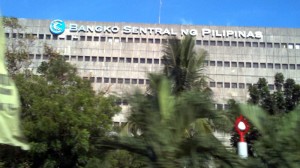THE PHILIPPINES moved up to third place on a list of countries where so-called “crony sectors” accounted for a big chunk of the gross domestic product (GDP), even as the share of rent-seeking tycoons’ wealth slightly slid amid a growing economy.
Data released by The Economist showed that in the Philippines, 11.3 percent of the GDP was comprised of the wealth of billionaires in crony sectors, citing data from various sources, including Forbes magazine and multilateral lender International Monetary Fund.
When the wealth of billionaires in non-crony sectors is included, their share in the GDP is 14.2 percent.
The Economist’s crony-capitalism index for 2016 placed the Philippines just behind Russia, where billionaire wealth as a percentage of GDP in crony sectors stood at 18 percent, and Malaysia’s 13.3 percent.
Among the 22 countries covered by the 2016 index, also in the top 10 were Singapore, Ukraine, Mexico, Indonesia, Turkey, India and Taiwan.
In the 2014 index, the Philippines was in fifth position with crony sector wealth at a slightly higher 11.9 percent of GDP, behind Malaysia, Russia, Ukraine and Singapore.
Total billionaire wealth as a share of Philippine GDP was also slighter higher at 14.7 percent in 2014.
While The Economist did not discuss specifics on the Philippines, it noted that in the country supporters of Rodrigo Duterte, the front-runner in the presidential election, hoped he would open up a feudal political system that has allowed cronyism to flourish.
“Crony capitalism—or ‘rent-seeking,’ as economists call it—shades from string-pulling to bribery. Much of it is legal, but all of it is unfair. It undermines trust in the state, misallocates resources and stops countries and true entrepreneurs from getting rich,” The Economist noted in an article titled “Dealing with murky moguls.”
Developing countries
In general, developing countries placed higher in the crony-capitalism index than developed nations.
Across developing countries, billionaire wealth from crony sectors as a percentage of GDP was nearly 4 percent; in developed countries, about 1.5 percent, The Economist said.
In developing countries, around 50 percent of billionaires’ total wealth came from crony sectors; in developed countries, below 20 percent.
The Economist identified the rent-seeking sector included in the index as follows: Casinos; coal palm oil and timber; defense; deposit-taking and investment banking; infrastructure and pipelines; oil, gas, chemicals and other energy; ports and airports; real estate and construction; steel, other metals, mining and commodities; as well as utilities and telecoms services.


